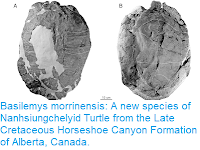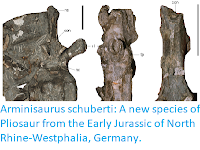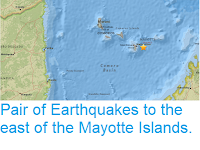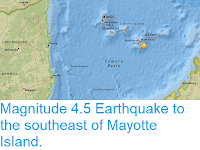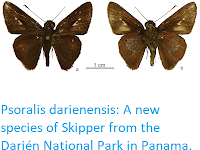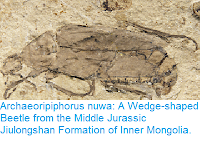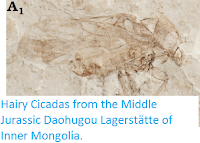Two people have reportedly died following a wall collapse at a disused ruby mine in Baw Lone Gyi near Mogok in the Mandalay Region of Myanmar on Tuesday 23 April 2019. The two were reportedly killed shortly after entering the mine, which was closed last year after the licence to work it held by the Hay Paing mining company expired. The mine has been the scene of several incidents since that time, most of them involving clashes between company officials, who have reportedly tried to retain control of the mine, and local people seeking to extract rubies informally.
Rubies are a form of the mineral corundum (a crystalline form of aluminium oxide) with a high aluminium content, which gives them their deep red colour (high iron corundum is green in colour, with the gemstones being known as saphires); rubies from the Mogok Stone Tract are particularly high in aluminium, making them a very deep red colour, and causing them to fluoresce under ultra-violet light, making them highly sought after. These rubies are traded as ‘Burmese Rubies’, although rubies from other parts of Myanmar are often traded under the name as well, and these are generally considered inferior by gem-dealers.
Rubies and sapphires are found at several localities throughout the immediate area surrounding Mogok in the Mandalay District of Myanmar (Burma). Peridot is mined only in the Pyaung Ganng Hills, north-northwest of the Mogok Township. This map shows the approximate locations of all Myanmar Gems Enterprise (MGE) mines and several joint-venture mines in the Mogok Stone Tract. Indicated here are the major gems mined, with red and blue used together to show both ruby and sapphire. Note that significant quantities of spinel are found at virtually all of the corundum mines, as are limited quantities of other gem materials. Unauthorized mining sites are not shown. Robert Kane in Kane & Kammerling (1992).
Corundum is typically formed within metamorphic rocks that are subjected to high levels of heat and pressure, usually along tectonic suture zones. The majority of the world’s rubies come from the Himalayan Suture, caused by the impact of the Indian Plate into the Eurasian, with a band of ruby-producing rocks that stretches from Afghanistan to Thailand, though the Burmese Rubies of Mogok are considered the finest rubies from this zone. Elsewhere in the world rubies are also mined in Macedonia, Montana and Mozambique.
The Mogok rubies originally formed as inclusions within marble beds (metamorphosed crystalline limestone), but are found in such deposits at a very low density, with most extraction being undertaken of reworked rubies from alluvial deposits (old river beds). This makes the industry particularly dangerous, as the deposits from which the rubies are extracted are poorly consolidated and highly unstable, making them difficult to work with modern mining machinery, with miners often using traditional methods that have poor safety records.
The majority of rubies from the Mogok Stone Tract are principally extracted using three forms of traditional mining.
Hmyawdwins are long, deep trenches which cut down through the sediments overlying the ruby-baring layers, through which water is then flushed to loosen the sediments, enabling rubies to be sieved from the deposits.
Ruby miners in a Hmyawdwin trench in the Mogok Stone Tract. The Myanmar Times.
Secondly, twinlons and lebins are deep-pit mines in which a narrow shaft is cut down through the overlying layers to reach the ruby-baring deposits; twinlons being simple round tunnels and lebins are square tunnels reinforced with timber. In both cases miners are lowered into the pit on a winch and pully, which is also used to extract sediment from the mine, which is sieved above ground for rubies. These mines are typically lit using a mirror above, and were formerly kept drying using locally made hand pumps, though modern diesel pumps are widely used today.
(Left) A variation of the classic twinlon mining method, a lebin is a square pit reinforced with timber and large leaves. Note the use of aluminium foil to reflect light into the mine and of a hand-cranked winch to hoist dirt and gem gravel to the surface in tightly woven bamboo buckets. (Right) At the bottom of a 100-m-deep shaft at Than Ta Yar, workers use a hand winch to haul out buckets of waste material. The wide plastic tube to their left carries water and gem-bearing gravels to the surface for processing. Holly & Robert Kane in Kane & Kammerling (1992).
Finally, loodwins are mining operations in which the miners enter natural caves in the limestone, formed by water percolating through the slightly soluble rock, searching for rubies that accumulated in sediments within the cave system, deposits in which the gemstones cab be highly concentrated.
The mines of the Mogok Stone Tract have long had a poor reputation for Human Rights, with prisoners being sent to the region as forced labour since at least the seventeenth century, until a rebellion in the early nineteenth century led to a cessation of (officially sanctioned) mining in the area. The area was annexed by the British in 1866, who granted sole rights to mine the area to Burma Ruby Mines Ltd. The company initially tried to prevent local artisanal mining in the area, but found this impossible, then tried to impose a tax on any rubies extracted, again with limited success as the area proved to have excellent smuggling networks, then eventually settled for charging a small license fee to mine, combined with trying to buy up the best gemstones on the open market that emerged.
Myanmar gained independence from Britain in 1948, with large scale mining in the area having been sporadic since then, hampered by the country’s poor Human Rights record. All mining in the area was nationalised in 1960, and remained in state hands until 1990 when foreign companies were invited to invest in the area. However, concerns about the behaviour of the ruling Military Council led to trade embargoes of Myanmar gemstones by the European Union, Canada, Australia, Switzerland, Norway, and the United States being introduced by 2008. The holding of elections in Myanmar and the replacement of the Military Council with an elected government led to the majority of these country’s lifting these bans between 2012 and 2016, but the resumption of hostilities by the Myanmar Military against member of the Rohinga ethnic group and other minorities has led to many country’s re-imposing embargoes, as well as a public outcry which led to leading jewellery companies, such as Cartier, stating that they would no longer handle gemstones from Myanmar.
Whilst these problems have hampered official exports from Myanmar, the economic stagnation that resulted has led to a thriving black market, with gemstones being smuggled across the country’s often porous borders, principally to Thailand, which hosts one of the world’s largest gem-cutting industries, and buyers are often unconcerned about the origin of stones. This has led to a proliferation of informal mineworkings, which provide an income for local people, but typically pay little-or-no attention to even Myanmar’s scant safety regulations.
See also...
Finally, loodwins are mining operations in which the miners enter natural caves in the limestone, formed by water percolating through the slightly soluble rock, searching for rubies that accumulated in sediments within the cave system, deposits in which the gemstones cab be highly concentrated.
Miners emerging from a loodwin mine in the Mogok Stone Tract. Getty Images.
The mines of the Mogok Stone Tract have long had a poor reputation for Human Rights, with prisoners being sent to the region as forced labour since at least the seventeenth century, until a rebellion in the early nineteenth century led to a cessation of (officially sanctioned) mining in the area. The area was annexed by the British in 1866, who granted sole rights to mine the area to Burma Ruby Mines Ltd. The company initially tried to prevent local artisanal mining in the area, but found this impossible, then tried to impose a tax on any rubies extracted, again with limited success as the area proved to have excellent smuggling networks, then eventually settled for charging a small license fee to mine, combined with trying to buy up the best gemstones on the open market that emerged.
Myanmar gained independence from Britain in 1948, with large scale mining in the area having been sporadic since then, hampered by the country’s poor Human Rights record. All mining in the area was nationalised in 1960, and remained in state hands until 1990 when foreign companies were invited to invest in the area. However, concerns about the behaviour of the ruling Military Council led to trade embargoes of Myanmar gemstones by the European Union, Canada, Australia, Switzerland, Norway, and the United States being introduced by 2008. The holding of elections in Myanmar and the replacement of the Military Council with an elected government led to the majority of these country’s lifting these bans between 2012 and 2016, but the resumption of hostilities by the Myanmar Military against member of the Rohinga ethnic group and other minorities has led to many country’s re-imposing embargoes, as well as a public outcry which led to leading jewellery companies, such as Cartier, stating that they would no longer handle gemstones from Myanmar.
Whilst these problems have hampered official exports from Myanmar, the economic stagnation that resulted has led to a thriving black market, with gemstones being smuggled across the country’s often porous borders, principally to Thailand, which hosts one of the world’s largest gem-cutting industries, and buyers are often unconcerned about the origin of stones. This has led to a proliferation of informal mineworkings, which provide an income for local people, but typically pay little-or-no attention to even Myanmar’s scant safety regulations.
See also...
Follow Sciency Thoughts on Facebook.













